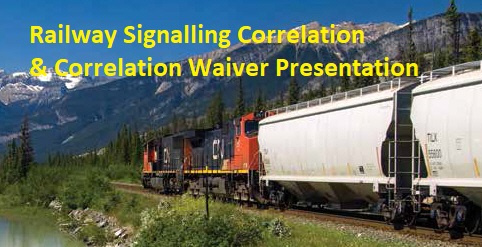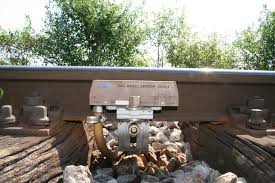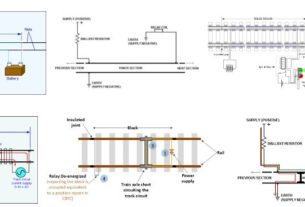Railway Signalling Correlation & Correlation Waiver Presentation
Purpose of Correlation
(quotes from NR/L2/SIG/11201 mod A7)
Correlation of signalling records and equipment and wiring on site is required to:
Check the accuracy of source records prior to any design alteration;
To check that records match the actual equipment and wiring at the site they represent.
This means that any discrepancies between the records and equipment are addressed in updated records before the project begins designing its changes to the signalling.
SCOPE
This module identifies the controls necessary so that correlation of signalling infrastructure is adequately carried out and specifies the records that are to be made and retained.
It should be followed before the commencement of any design work which will alter existing signalling systems, including renewals, and at other times specified by the Route Asset Manager (S&T).
Background
* The prime causes for poor correlation between records and the physical wiring and equipment on site are:
* Inadequate record control when the original works were installed,
* Site equipment or wiring that has been altered without the corresponding master records being updated,
* Multiple schemes at the same location that have been installed in a different order to that for which they were designed,
* Works installed but never commissioned.
* The correlation should include a comprehensive check of all control equipment and it’s labelling including equipment racks, cable terminations and apparatus cases.
* The check should include all line-side equipment including signals, points and track circuit bonding. Equipment should be checked against the records so that it is of the type and in the position specified.
* Wiring should be positively correlated to the records by methods such as visual examination and wire counting. Any unrecorded equipment or wiring should also be identified.
See Appendix ‘B’ – correlation includes:-
* Wiring, wire count (incl. null wires), core allocation
* Looping
* Relays:- types, pin code, contacts, contact analysis sheets
* Modules:- types
* Profile:- fuses, equipment position
* Cabling
* Terminations,
* Control panel:- tiles, wiring
* etc – this list is not exhaustive
FOR FURTHER DETAILS REFER NR/L2/SIG/11201 – Mod A7
By persons competent NR/L2/SIG/11201 – Mod A3. (Assessment of Signalling Systems before Signalling Design Alterations)
* Section NR/L2/SIG/11201 – Mod A3 requires:-
* Ability to understand wiring sheets
* Ability to assess installation condition
* Awareness of dangers of loose or broken wires
* Ability to compile the report
* Awareness of hazards and working in electrical areas
Further clarification for electrical circuits is given below:-
Where a circuit is totally within an interlocking EVERY contact in the whole circuit shall be correlated (bus bar through to relay and back!). This includes all relays, lever contacts, switches, electrical contacts, termination blocks etc.
Where a circuit goes between a relay room and external location case(s), the full circuit shall be correlated. Where the function is looped in and out of intermediate location case(s), the function shall be correlated in every one of those intermediate cases. Note: There are many instances where cable cores have been altered or additional relay contacts not shown on records have been added. The purpose of correlation is to find and record such instances.
Correlation Waiver
The Route Asset Manager (S&T) may waive the correlation check in whole or in part under any one of the following circumstances:-
* It can be verified that the records are accurate to the testing records of the installation and an auditable process is in place so that any subsequent amendments have been fully documented.
* Adequate records do not exist and the cost of creating them would be grossly disproportionate to the risks involved.
* A full correlation check would involve such disconnection of wiring or disturbance of fragile wiring or equipment, that it is assessed as introducing greater risk to the safety of the railway than would arise from not completing a full correlation.
Where small alterations are made or where the alterations to a particular equipment case or installation is small, it may be appropriate to reduce the level of correlation at that specific site.
Each instance must be considered individually and any request for a Waiver shall be clearly stated. This request shall list every equipment (location) case or rack wiring and state what will and what will not be correlated.
This shall be sufficiently clearly written such that a person not included as part of the scheme shall be fully able to understand what is being requested.
To approve a waiver I expect to know EXACTLY what I am agreeing to. This MUST be clearly spelt out on the application form that you expect me to sign.
* Does the application show what IS (and therefore what is NOT) being correlated.
* Has the request been supported by a Risk Analysis? Where is it.
* Does the application show the records being correlated?
(Hint: Give the application to someone else to read through. Can they understand what is stated).
Examples of when a waiver or partial waiver MAY be granted:-
Full Waiver
Equipment is only being recovered. NO new equipment is being installed.
New installation (where records are known to be accurate)
Partial Waiver:- (note: this needs to be defined)
Minor change – e.g. just one relay is affected
New installation,Partial Waiver,Minor change,Looping,Cabling ,Terminations,Control panel,tiles, wiring,fuses, equipment position,pin code, contacts, contact analysis sheets,Wiring, wire count (incl. null wires), core allocation



